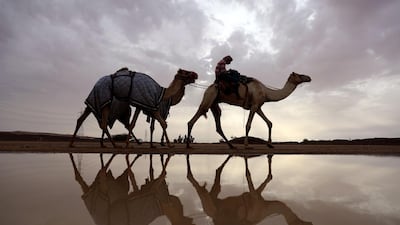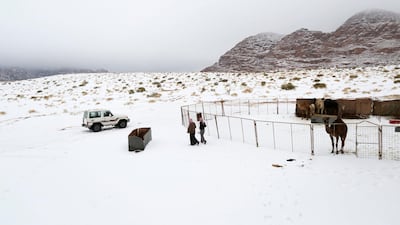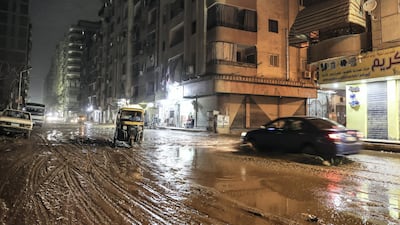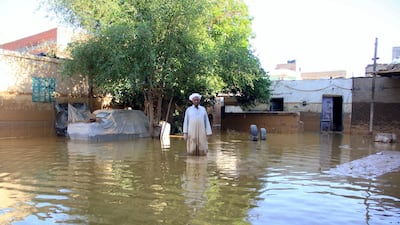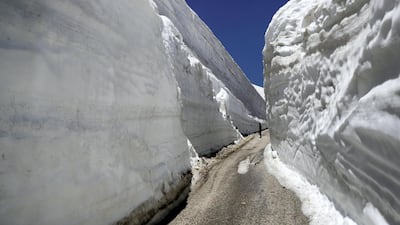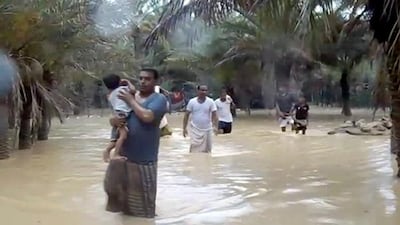As politicians fight over how to implement the Paris Agreement and campaigners warn of a global emergency, the facts on the ground in the Middle East suggest climate change has already begun to take its toll.
The region has faced unprecedented climatic events in recent years, and they are likely harbingers of greater meteorological turbulence in the decade ahead.
In July 2017, the temperature at the Mitribah meteorological station in Kuwait reached 53.9 °C, a record for the region and, potentially, the highest figure ever reliably recorded in the world.
This came a year after Nasa released a report stating that, over the previous 10 years, the region had faced its worst drought for 900 years.
With global average temperatures rising by an average of about 0.17°C a year, the effects on the planet are set to intensify.
Temperature rises are particularly high in the Middle East because the hottest (and the coldest) parts of the world are warming faster than temperate regions.
Compounding this, the heating effect from climate change is stronger in the in the Middle East in summer than it is during the rest of the year.
And when it comes to the waters of the Arabian Gulf, shallowness is an additional factor amplifying the effects of rising temperatures, with the sea’s depth averaging only about 30 metres.
Dr John Burt, an associate professor at NYU Abu Dhabi who studies coral reefs, describes the Gulf as “the canary in the coal mine” when it comes to climate change.
“We have some of the hottest seas in the world in the summertime. Because the organisms have adapted to these extreme temperatures, they’re very susceptible to changes,” he said.

“They’re living at the edge of their thermal tolerance. When you nudge them, you can push them over the thermal precipice pretty easily.”
Extreme hot weather in the summer of 2017 bleached more than 90 per cent of corals in Abu Dhabi waters, the high temperatures causing the coral to produce excessive amounts of oxygen and expel the algae with which they normally live in harmony. By the following spring, 73 per cent of the remaining coral cover had been lost.
In place of the hundreds of hectares of table corals, observed during 1960s studies off Abu Dhabi, are species that are more robust in the face of extreme heat — but which support a less diverse ecosystem.
Bleaching events are becoming more common — there was further bleaching in the summers of 2018 and 2019 — so coral is less likely to have the window of 10 to 15 years of moderate temperatures needed for recovery.
Some climate models predict stronger shamal winds over the Gulf in the decades to come, which could lead to cooling that would offer the coral some respite.
Nevertheless, temperatures overall in the region are expected to continue to rise.
Prof Jos Lelieveld, who leads a research group focused on Middle East climate change at The Cyprus Institute research centre in Nicosia, Cyprus, describes the trend in summer temperatures as being “strongly upward”.
“This is really troubling because it’s already at the limit,” said Prof Lelieveld, who also works at the Max Planck Institute for Chemistry in Mainz, Germany.

“The heat extremes are becoming more extreme. It’s going to be more and more of a problem. We see it in the data.”
He said that, in the years to come, “heat records will be broken continuously”. The Max Planck Institute has reported that, by 2050, mean daily temperatures in parts of the Middle East could reach 47°C and will remain above 30°C at night.
A 2016 paper in the journal Nature described the Arabian Gulf as a regional hotspot where climate change, unless there is "significant mitigation", is "likely to severely impact human habitability in the future".
A key figure is the wet-bulb temperature, which combines temperature and humidity. A wet-bulb temperature exceeding around 35°C is likely to be fatal to people exposed to it for sustained periods. As temperatures increase, the maximum tolerable wet-bulb temperature will be exceeded more often.
In poorer parts of the Middle East and Africa, where air-conditioned buildings are less common, “this heat can become life-threatening”, according to Prof Lelieveld.
“Especially in the Gulf area, which is under the influence of the sea, the moisture will also increase because of the evaporation,” he said.
“The Emirates will be very strongly affected, including Abu Dhabi, but I’m sure, with the financial power behind the governments, they can mitigate the effects by basically creating facilities so that people can stay inside.”
In parallel with temperature increases, sea levels are rising globally by an average of about 3.4mm a year as warming causes oceans to expand, and glaciers and ice sheets to melt.
The World Bank has said that 24 port cities in the Middle East are under threat and has previously warned that “low-lying coastal areas in Tunisia, Qatar, Libya, the UAE, Kuwait and particularly Egypt are at particular risk”.
As well as risking flooding in urban areas, sea-level rises are likely to have consequences for agriculture. Saltwater intrusion in places such as the Nile delta is forecast to become an increasing problem and could affect crop yields.

Agriculture will also face greater challenges from the overall decline in rain, which is expected to result in more frequent sandstorms, worsening air quality.
At the same time, despite the overall downward trend in precipitation, extreme rainfall events are becoming more common. Researchers from the Saudi Geological Survey wrote in a scientific paper this year that rainstorms hitting Jeddah in Saudi Arabia have increased “dramatically” since 2009, killing scores of people.
“This situation gives clear evidence [of changes in] the climate system that could cause more storms in the future,” the researchers wrote.
Continued temperature increases and rainfall shortages are set to intensify water scarcity, with the World Bank having forecast that up to 100 million people in the region could face shortages by 2025.
Overall, few regions of the world face difficulties from climate change on the scale of those confronting the Middle East. In a region blighted by myriad political tensions, Prof Lelieveld hopes the challenges thrown up could have a unifying effect.
“I also believe climate change is something that unites people in the Middle East because they’re all affected. I’m hoping by collaborating, people can … focus on something important to everybody,” he said.
